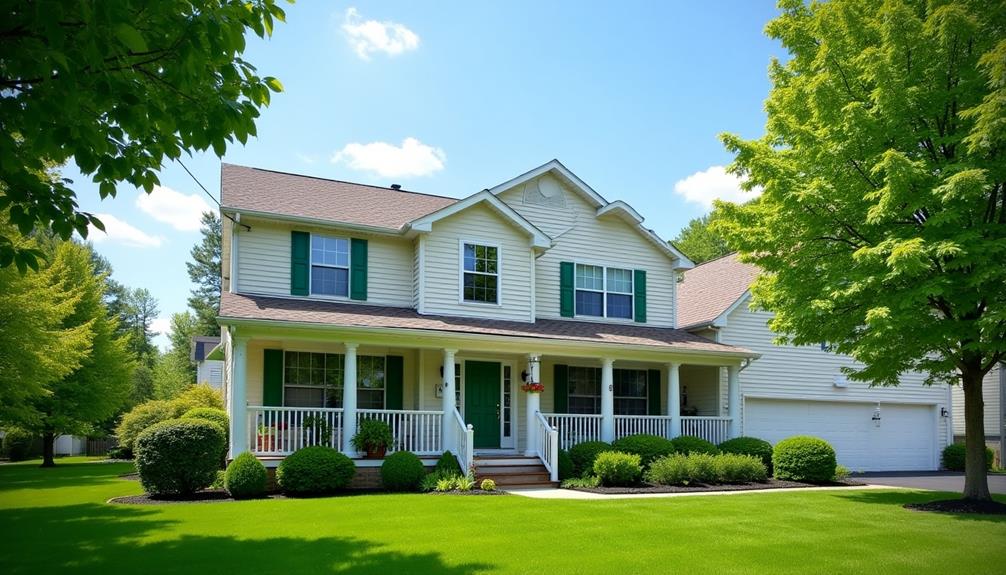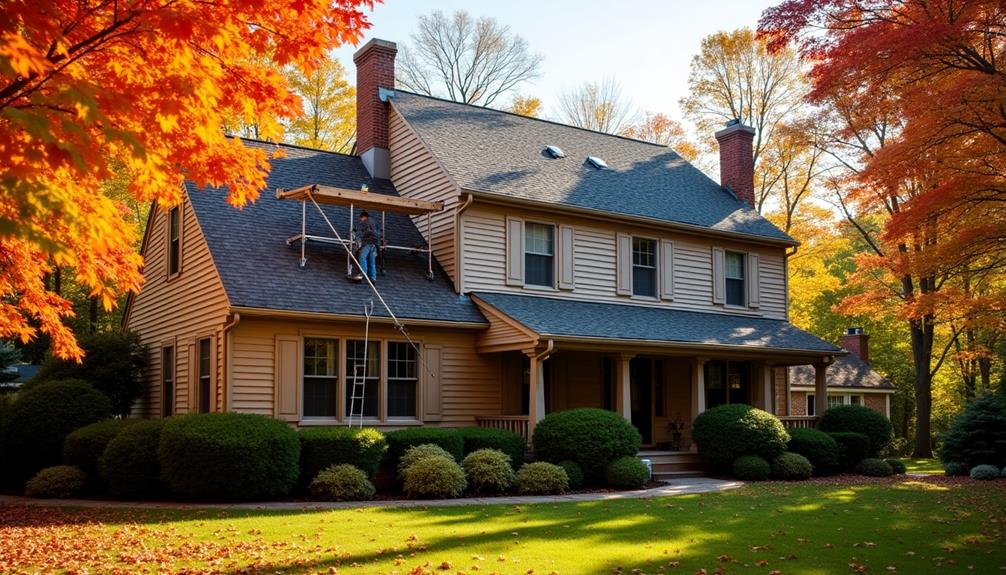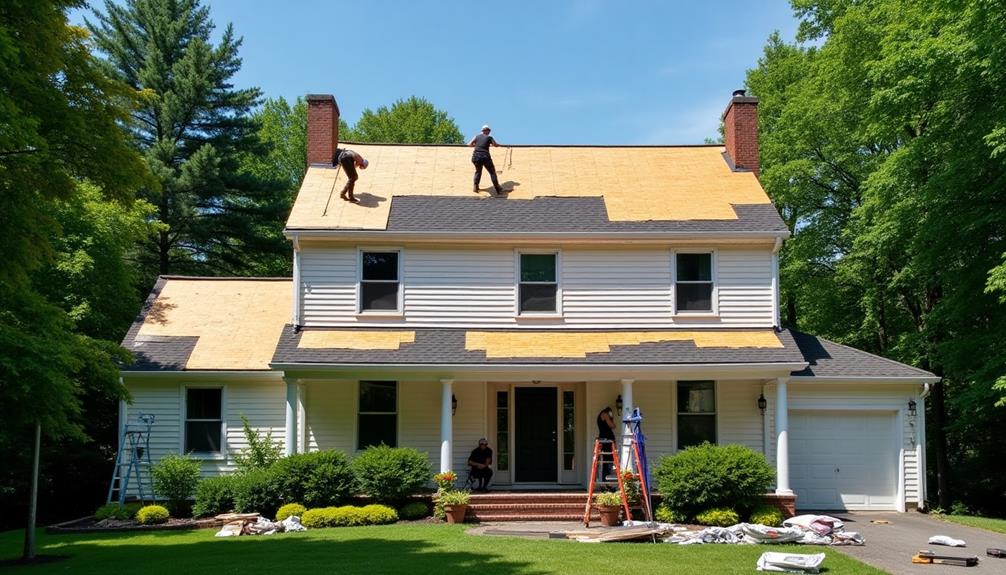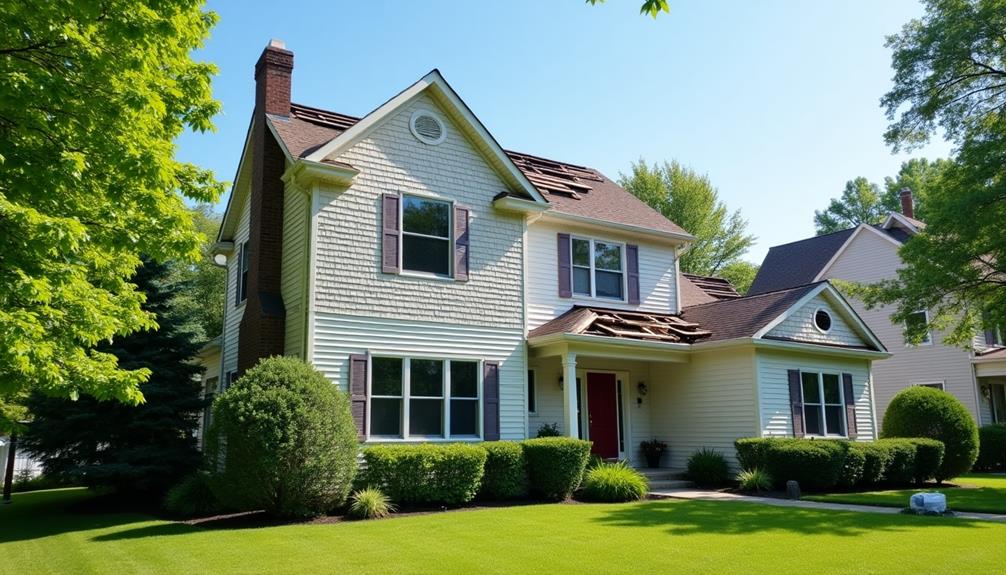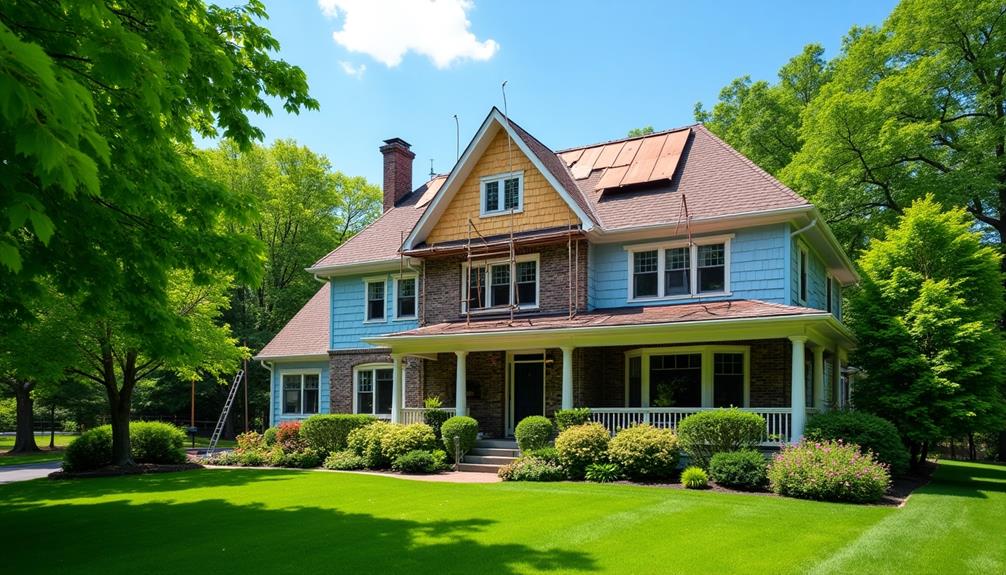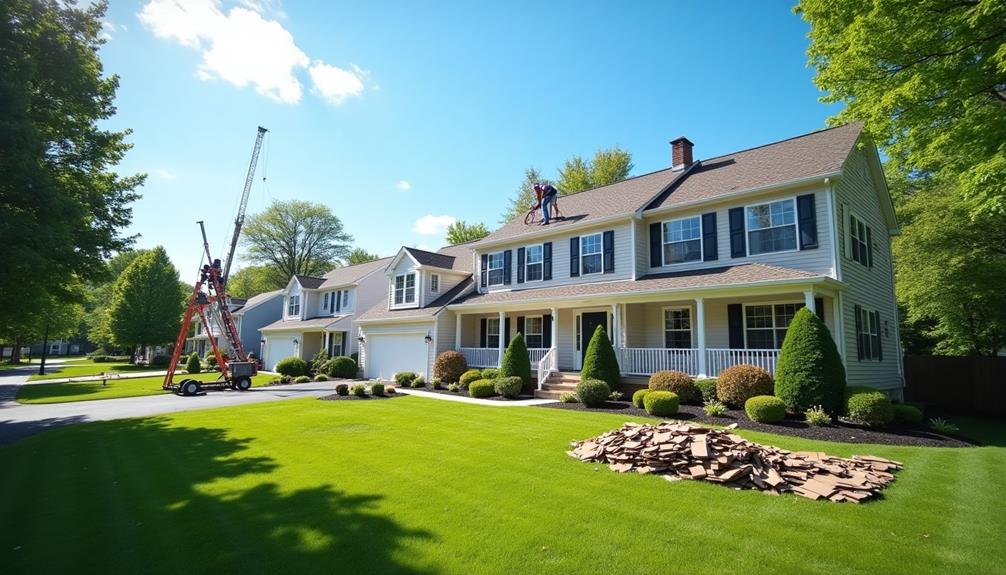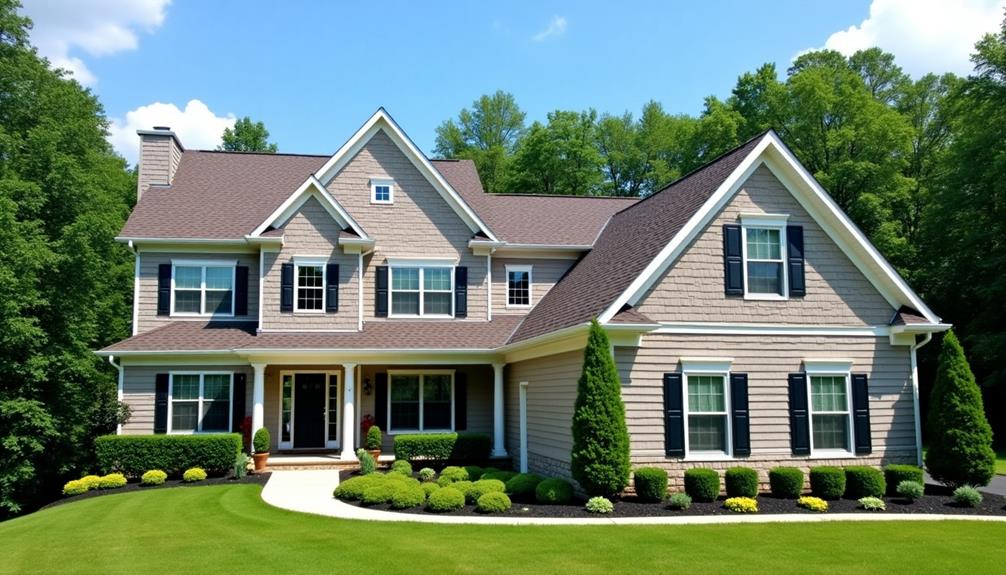If you're considering roof replacement in Hammonton, NJ, recognize the signs: curling shingles, water stains, or an aging roof beyond 20 years all need attention. Choosing durable materials like metal or slate can save you money in the long run, as they require less frequent replacement compared to asphalt. Always factor in labor and permit costs when budgeting. Finding reliable contractors is essential; check credentials and reviews. A new roof not only enhances your home's aesthetic and energy efficiency but also provides peace of mind. There's a lot more to explore about this important home improvement.
Signs You Need a Roof Replacement
Recognizing the signs of a failing roof is crucial for homeowners in Hammonton, NJ, to prevent costly repairs. One of the first indicators is roof age. Most roofs have a lifespan of 20 to 30 years, so if yours is approaching this limit, it's time for a thorough inspection.
Look for curling or missing shingles, which can signal deterioration.
Another critical aspect is leak detection. Water stains on your ceilings or walls are strong indicators of roof issues. If you notice these stains, it's essential to investigate immediately, as they can lead to significant structural damage if left unchecked.
Additionally, check for granules in your gutters; an excessive amount often means your shingles are losing their protective coating.
You should also inspect flashings around chimneys and vents. If they're cracked or peeling, water can seep in, leading to leaks.
Lastly, don't forget about mold or mildew growth in your attic, as it indicates moisture problems.
By staying vigilant and addressing these signs promptly, you can avoid the financial burden of a premature roof replacement.
Choosing the Right Materials
When it comes to roof replacement, selecting the right materials is crucial for ensuring durability and longevity.
You'll want to weigh the cost against how long each material will last, as this can significantly impact your investment.
Material Durability Considerations
Choosing the right materials for your roof replacement in Hammonton, NJ, can significantly impact your home's longevity and energy efficiency. When selecting roofing materials, consider their durability and how they withstand local weather conditions. For instance, asphalt shingles are popular due to their cost-effectiveness but may require more frequent replacements compared to metal or slate options, which can last decades.
Moreover, think about the environmental impact of your choices. Materials like metal roofing are often made from recycled content and are fully recyclable at the end of their lifespan, making them a more sustainable option. This not only reduces waste but also contributes to a healthier environment.
Don't overlook maintenance requirements either. Some materials may demand more upkeep, such as regular cleaning or sealing, which can add to your long-term costs and effort.
Cost vs. Longevity Analysis
A thorough cost versus longevity analysis is essential when selecting roofing materials for your replacement project in Hammonton, NJ. You want to ensure that your investment pays off over time. While lower-cost materials might seem appealing initially, they often require more frequent repairs and replacements, leading to higher long-term expenses.
Consider these factors during your budget planning:
| Material Type | Average Lifespan |
|---|---|
| Asphalt Shingles | 15-30 years |
| Metal Roofing | 40-70 years |
| Slate Roofing | 75+ years |
Investing in durable materials like slate or metal can save you money and stress in the long run. Make sure to follow proper maintenance tips to extend the life of your chosen roofing material. Regular inspections and timely repairs can help you avoid costly replacements sooner than expected.
Choosing the right roofing material isn't just about upfront costs; it's about finding the best value over time. By weighing the initial expense against longevity, you'll make a more informed decision that aligns with your financial goals.
Understanding the Cost Factors
Roof replacement can be a significant investment, and understanding the cost factors involved is crucial for homeowners in Hammonton, NJ. Several elements influence the overall price, and knowing these can help you with effective budget planning.
First, the type of roofing material you choose will greatly affect costs. Options like asphalt shingles, metal, or tile vary in price, longevity, and maintenance.
Labor costs also come into play, depending on the complexity of the installation. If your roof has unique features, such as skylights or chimneys, additional expenses may be incurred.
Don't forget about permits and disposal fees, which can add to your total. It's wise to account for unexpected repairs that might arise during the replacement process.
Considering financing options can alleviate some of the financial burden. Many contractors offer payment plans or financing solutions that fit your budget, making it easier to manage your expenses.
Finding Reliable Contractors
When embarking on a roof replacement project, finding reliable contractors is essential to ensure quality work and peace of mind. Start by verifying contractor credentials. Check if they're licensed, insured, and have a good standing with local business bureaus. These factors directly impact their professionalism and reliability.
Next, delve into client reviews. Look for testimonials on their website and third-party review platforms. Positive feedback can indicate a contractor's ability to meet deadlines and provide excellent workmanship.
Don't hesitate to ask for references; speaking directly to past clients can give you insight into their experiences and satisfaction levels.
Also, consider getting multiple quotes. This not only helps you gauge the market rate but also allows you to compare the services offered.
Be wary of unusually low bids, as they can signify subpar materials or hidden costs.
Preparing for the Roof Replacement
Preparing your home for a roof replacement is crucial to ensure a smooth process and minimize disruptions. Start by securing the necessary roofing permits, as most local regulations require them before any work begins. This step not only keeps you compliant but also protects your investment.
Next, consider the weather conditions during your roof replacement. If you're scheduling during the rainy season or extreme temperatures, you might face delays or complications. It's advisable to consult with your contractor about the best time for the replacement to avoid these weather-related issues.
Clear your yard and outdoor spaces of any furniture, decorations, or vehicles to create a safe working environment. This not only protects your belongings but also allows the roofing crew to operate efficiently.
Inside your home, move valuables away from windows and doors, as the noise and vibrations from the installation can cause damage.
Benefits of a New Roof
Installing a new roof offers numerous benefits that can significantly enhance your home's value and performance. One of the most compelling advantages is improved energy efficiency. Modern roofing materials are designed to reflect heat and insulate your home, which can lead to lower energy bills. By reducing your reliance on heating and cooling systems, you not only save money but also contribute to a more sustainable environment.
In addition to energy efficiency, a new roof dramatically boosts your home's aesthetic appeal. Whether you opt for stylish shingles or sleek metal panels, a fresh roof can transform your property's overall look. This enhancement can make your home more inviting and increase its market value, should you decide to sell in the future.
Moreover, a new roof provides peace of mind. With advancements in materials, you get improved durability and protection against harsh weather conditions, reducing the likelihood of leaks and costly repairs.
Ultimately, investing in a new roof is a smart choice that yields tangible benefits, enhancing your home's comfort, appearance, and long-term value. Don't wait—consider the advantages today!

